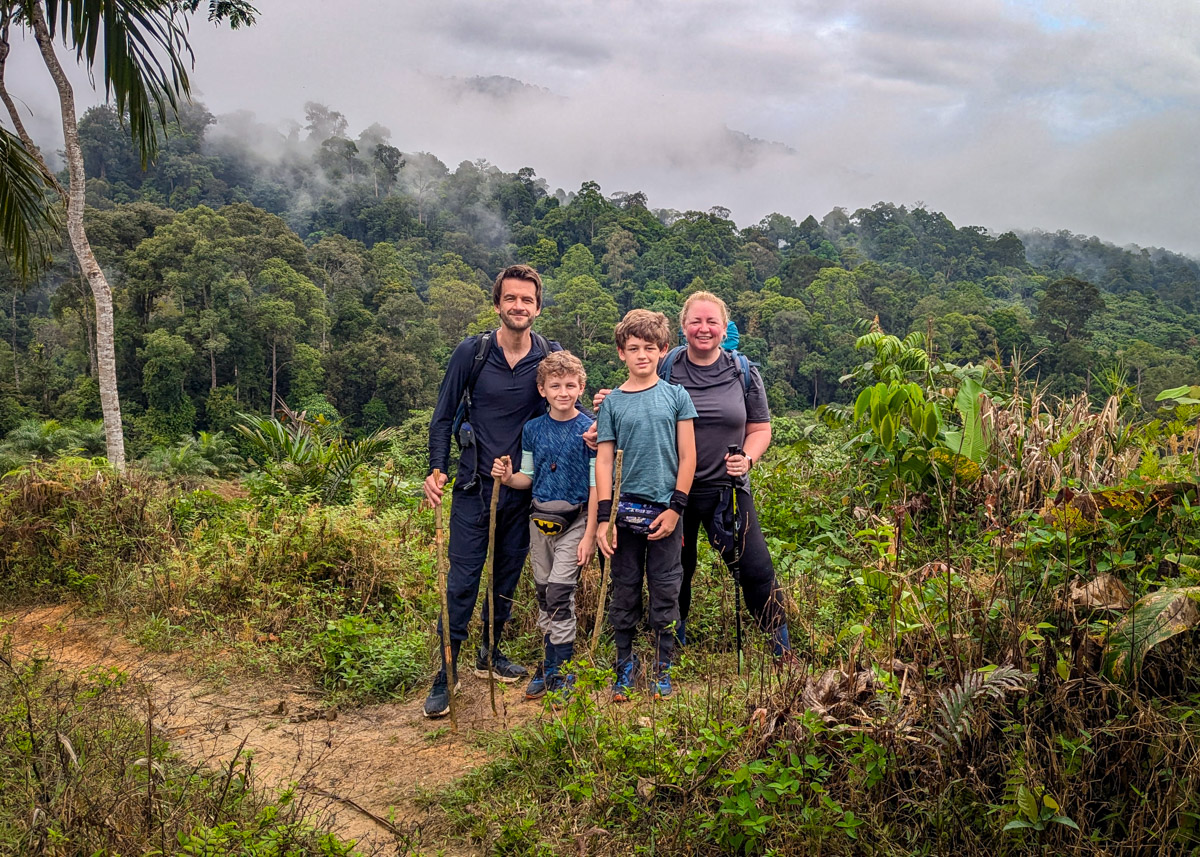Bukit Lawang is a popular destination for rainforest treks but it can get busy in peak periods. If you’re looking for a family-friendly overnight hike that takes you away from the crowds and into pristine rainforest, we’ve found the perfect option for adventurous families keen to explore an increasingly rare habitat.
The largest island in Indonesia and the sixth largest in the world, Sumatra is one of the top places for adventurous travelling families to visit. And perhaps its most evocative and unmissable experiences are the rainforest treks that begin from small town of Bukit Lawang. While parts of the trek are popular with tourists, there is one company in town who specialise in bespoke, off-the-beaten track treks, where you get away from the humans and closer to the natural world.
We completed the two day, one night trek with Green Hill in Bukit Lawang and have been talking about it ever since. With humid days, rustic nights and leeches for company, this isn’t a simple family trek, but it’s one that rewards your perseverance and offers a window into a relatively untouched rainforest, with orangutan sightings if you’re lucky, but stunning Sumatran memories all but guaranteed.
If you’re planning a visit to Sumatra with kids, then this trek really is a must do.
Disclaimer: We embarked on this Bukit Lewang family jungle trek in January, covering all costs ourselves without any compensation or incentives for this review or social media coverage.
Booking your trip
We arranged everything through Andrea at Green Hill, an incredible lady originally from the UK, who has been at the forefront of conservation in Bukit Lawang for many years. She was always patient when answering our (many) pre-trek questions and helping us plan for this adventure and has put together a wonderful team who are just as passionate about conservation as her and were wonderfully supportive of our family on this adventure.
What to pack
You’ll be heading deep into the rainforest on this trek so it’s essential you pack wisely. Some items can be bought in Bukit Lawang, but for ease it’s highly recommended to arrange your kit in advance. As you’d expect, there aren’t any shops in the rainforest itself once you begin your trek.
- Long trousers and long-sleeved shirts (ideally in natural colours)
- Longer socks which can easily tuck into your trousers
- Lightweight trainers are best, no need for heavy walking boots
- Flip-flops for walking around camp at night
- Aqua-shoes as there are a couple of minor river crossings with hard rocks underfoot and these are very handy for all the river swimming opportunities too
- Headtorches
- Mosquito repellent (ideally with DEET)
- Sunscreen, although the majority of the trek is under the cover of the rainforest
- Poncho or lightweight waterproof jacket
- Walking pole
- Inflatable camping mattress; not essential but highly recommended if you don’t fancy an uncomfortable night on the hard floor at camp.
- Swimming gear for river swimming and a microfibre towel.
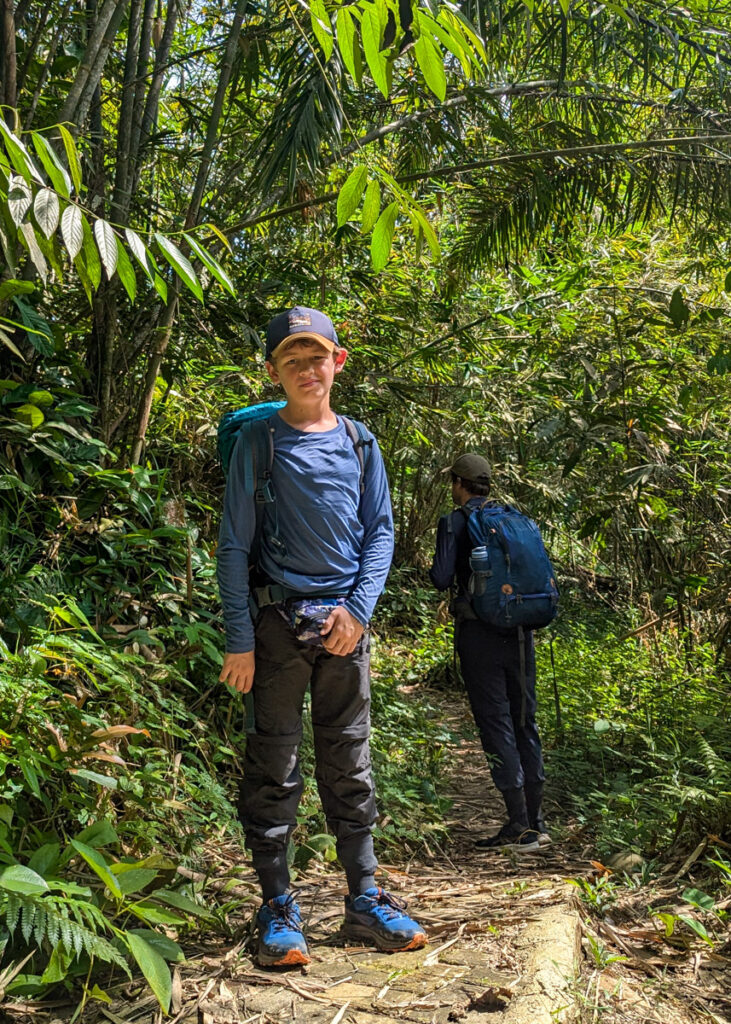
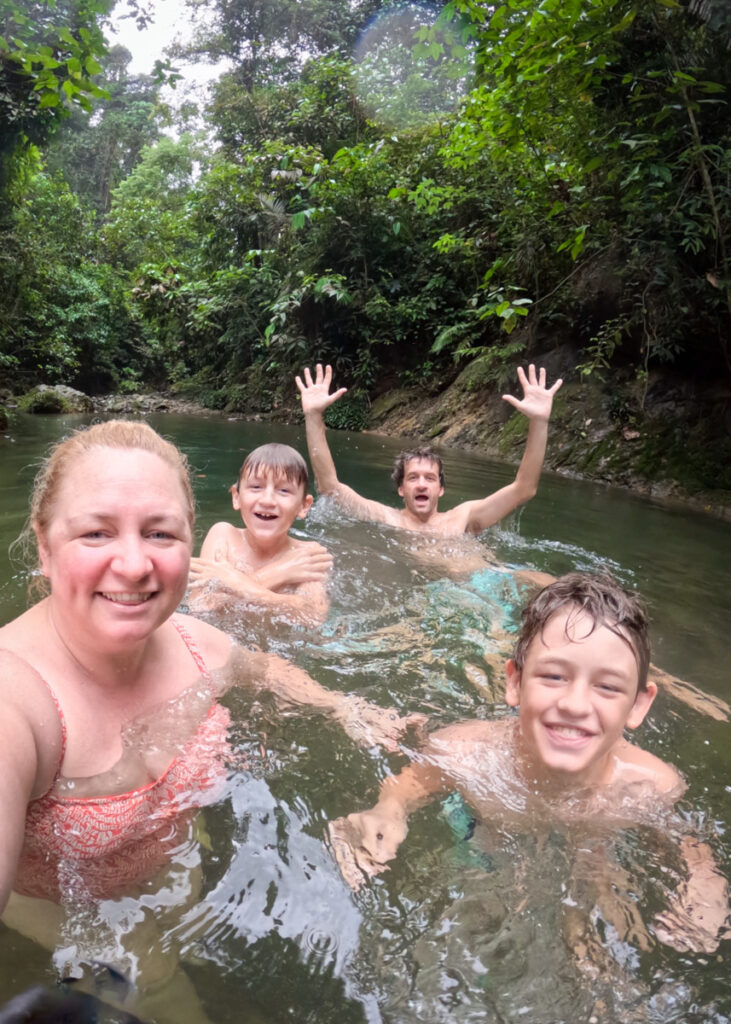
How to reach Bukit Lawang
The majority of tourists visiting North Sumatra are on the same loop which includes Medan, Bukit Lawang, Berastagi and Lake Toba (click here to read our Sumatra with kids itinerary). There are some public and tourist buses linking the tourist locations but if you’re travelling as a family it’s far easier (and usually cheaper) to book a private transfer.
Green Hill can help organise this for you. In our case, they arranged a driver to deliver us from Medan Airport straight to Bukit Lawang and then on to Berastagi after we’d completed the trek.
The vehicles were in great condition and very comfortable, although do remember the poor standard of roads in Sumatra and other drivers won’t be as patient as your own. With lots of winding roads to navigate, anyone suffering from motion sickness are best off in the front seat with a sick bag close by if you’re doing the drive from/to Berastagi.
Once you reach Bukit Lawang, it’s a fifteen minute walk along narrow streets to reach Green Hill Guest House. Cars can’t fit down here but, annoyingly, mopeds can. The buzzing of moped engines and exhausts is a constant and annoying soundtrack to Bukit Lawang (and everywhere else in Sumatra).
Where to stay
Green Hill Guest House is a relaxed and welcoming place to stay, slightly away from the busier part of Bukit Lawang. Although there is some development happening directly outside, the reception and lounge are calm areas to rest and recharge, with board games and books available to guests.
We stayed in the family room which sits a few metres above reception, allowing for views over the river and the surrounding hills. It’s ideal for a family of four, with a double-bed and two singles cleverly tucked away on raised platforms. There’s no air-conditioning but instead a couple of fans and mosquito nets over each bed.


You also get a rustic but functional private bathroom on the lower level, complete with bucket-flush toilet and a cold shower with water delivered directly from the river via a pipe. It’s not luxurious by any means, but we actually quite enjoyed it for a couple of nights and the pipe shower is certainly refreshing after a long jungle trek.
Perhaps the highlight of the room is the balcony from where you can sip a cold beer and try to spot wildlife in the rainforest opposite. Just watch out for the macaques. Wifi is free but we didn’t get the best signal out at our room, although it was fine down in reception.
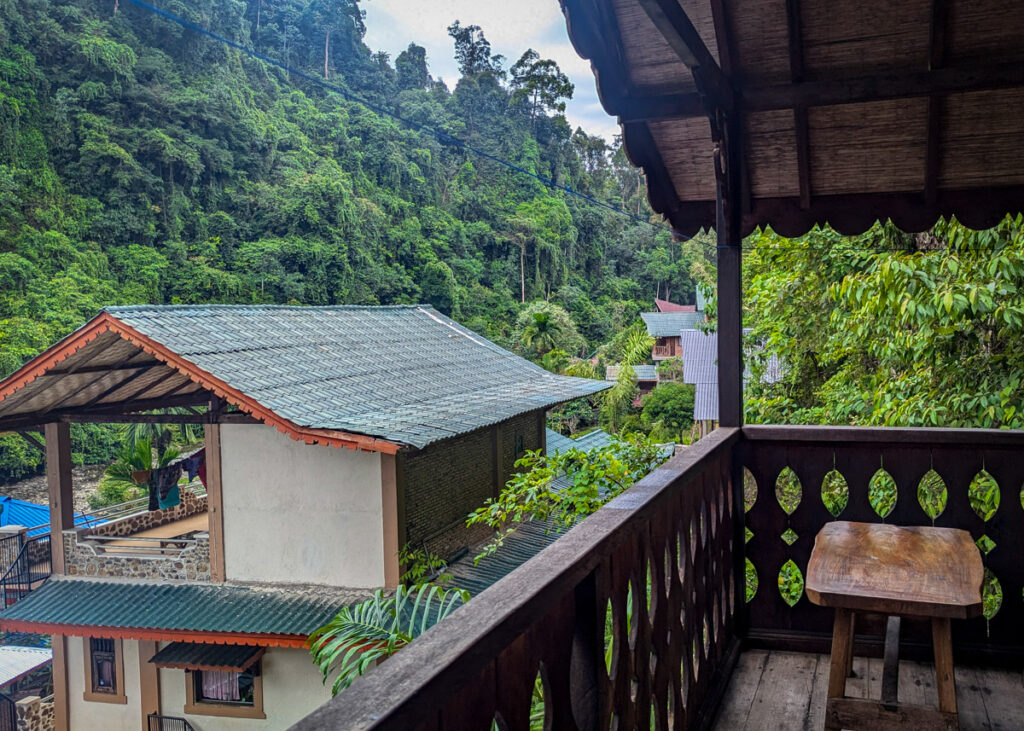
Breakfast isn’t included in the room rate so you have the choice of paying to eat at Green Hill (food is decent) or wandering down to one of the other restaurants along the riverside. Our favourite quickly became Wild River, just a few metres away from Green Hill.
As with everywhere else in Bukit Lawang, cash is preferred at Green Hill, so make sure you stock up before you arrive as there’s no ATM here.
Day 1 of the trek
Most tourists to Bukit Lawang enjoy at least some time trekking in the surrounding rainforest but the first day of Green Hill’s trek is unique to their company. Andrea and her husband own a protected patch of rainforest which only their guests have access to. This means that on day one, you’re heading off the beaten track, away from other tourists and into pristine jungle for a truly special experience.
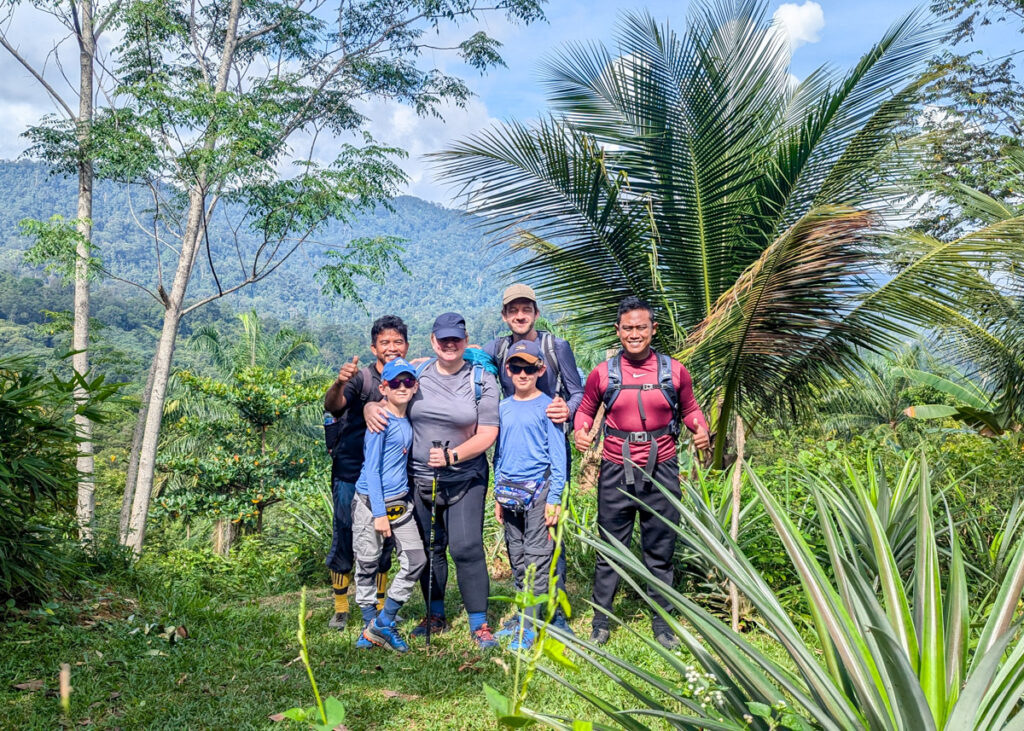
The trek starts with a safety briefing at Green Hill before walking back through the village to the main road. From here, a battered minivan is waiting to transport you to a village where you can meet local kids, grab some last minute snacks and visit the pretty library. Afterwards, via a quick stop at Green Hill’s other accommodation (a beautiful eco-lodge, available for overnight stays if you don’t fancy a hard floor at jungle camp), you begin the descent into the rainforest and start the trek.
After crossing a river and getting your first liberal application of tobacco water (to ward off leeches), you’re immediately struck by how enclosed (and slightly claustrophobic) the rainforest can be. Your guides position themselves at the front and back of the group, offering encouragement and information about the wildlife, with the occasional swing of a machete to clear the path.


It’s tough, hot, sweaty and tiring trekking, but equally fun and rewarding. There are plenty of chances to break for water and rest, including an idyllic stop for lunch (fried rice, vegetables and fruit) next to the river. Do keep in mind that this is largely untouched rainforest, so the chance of seeing any wildlife is fairly low, especially the big-ticket items such as orangutans and tigers.

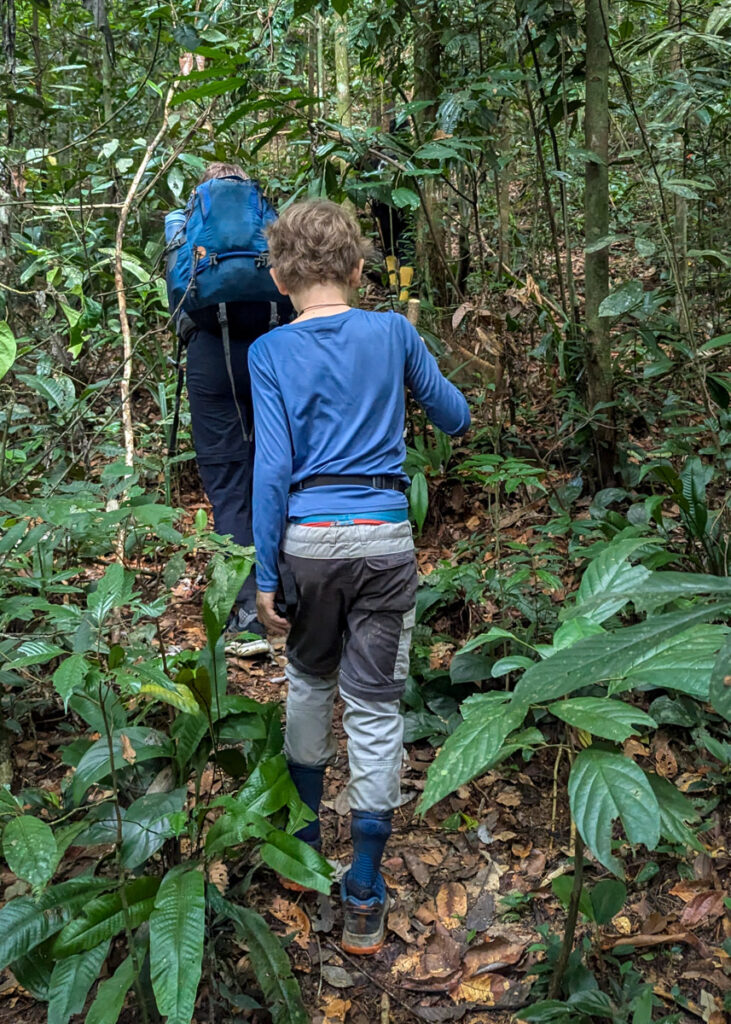
Depending on your pace, you should reach camp around 3.00pm, just enough time for rest and swim in the river before dinner at 5.30pm. The food is excellent here, freshly prepared by the camp cook, with huge portions and relaxed chat around the fire. It gets dark quickly in these parts so, after a brief visit to the camp toilet (super, super basic), you retire to the huts and try to get some sleep (see section below for an honest rundown on what it’s like to sleep here).
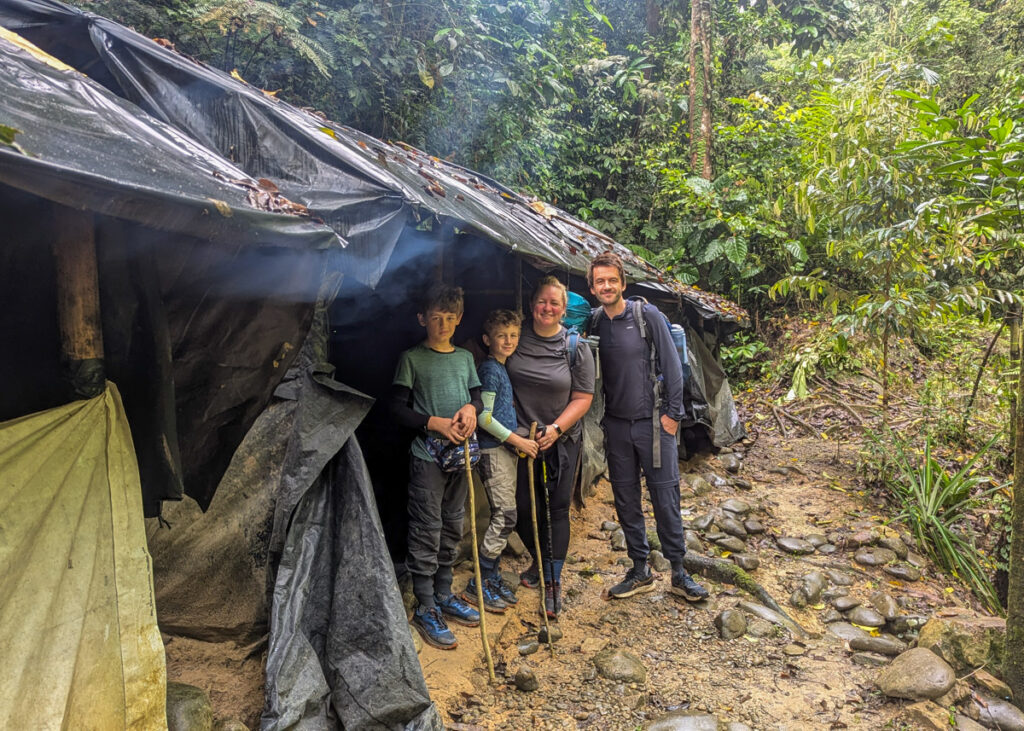
Day 2 of the trek
The second day starts early with a quick breakfast, packing away your kit and climbing out of the rainforest towards the main road. It comes as quite a shock when you break free of the canopy and take in panoramic views again. We were quite forlorn and nostalgic as we peered back down to the rainforest and realised how special it had been to spend a day immersed within it.
After a quick trip in the minivan (and saying goodbye to one of your guides and the cook), you cross the bridge at Bukit Lawang (you can buy some supplies here if needed) and re-join the main tourist route. Entering the national park, you have a much greater chance now to spot wildlife and you’re (semi) guaranteed to see orangutans and Thomas’s leaf monkeys, although you’ll have plenty of other humans for company too.


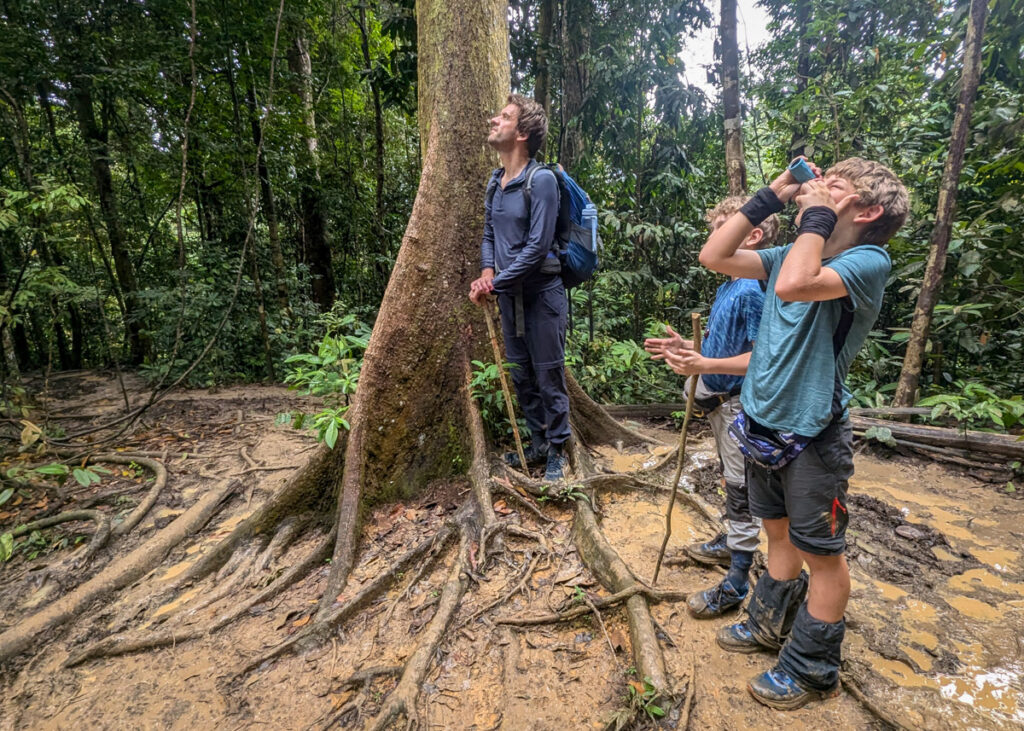
After another fruit break, the trek continues downhill towards the river (can be slippery on the rocks) and becomes slightly quieter. It’s a good idea to have aqua shoes in your backpack and you’ll use them here as you need to cross the river a couple times. If the water level is particularly high, your guides might get you to sit in inflatable tyres and pull you across, which is lots of fun but perhaps feels slightly harsh on them after all the work they’ve already done for you.
The final stage of the trek is the adrenaline-filled raft ride back to Bukit Lawang. Several tubes are tethered together, your bags are secured in watertight plastic bags, and you jump in and flow downriver towards town. It’s a huge amount of fun, although can be bumpy at times with the occasional interaction with boulders under the surface. Note that lifejackets aren’t provided.


You’ll be deposited right next to Wild River restaurant from where it’s a short walk back to Green Hill Guest House. Then it’s time to say goodbye to your guides (tips of IDR 50,000 to 100,000 are appreciated with perhaps IDR 20,000 to your raft driver, even though you only saw him for ten minutes).
What is the overnight accommodation like?
A night sleeping outdoors in the rainforest might feel like a magical experience, but it’s understandable if you’re wondering how the reality measures up. The first thing to say is that the camp is very rustic, but in our opinion, this is all part of the charm and experience. If you’re concerned about how you’ll cope, do consider Green Hill’s eco-lodge, which offers an altogether more comfortable experience, but you will take a different trekking route and won’t have that back-to-nature moment in the evening.
The camp is comprised of a few bamboo huts erected using traditional techniques. They blend seamlessly into the environment and it’s very much the jungle camp experience you had in mind when you booked.
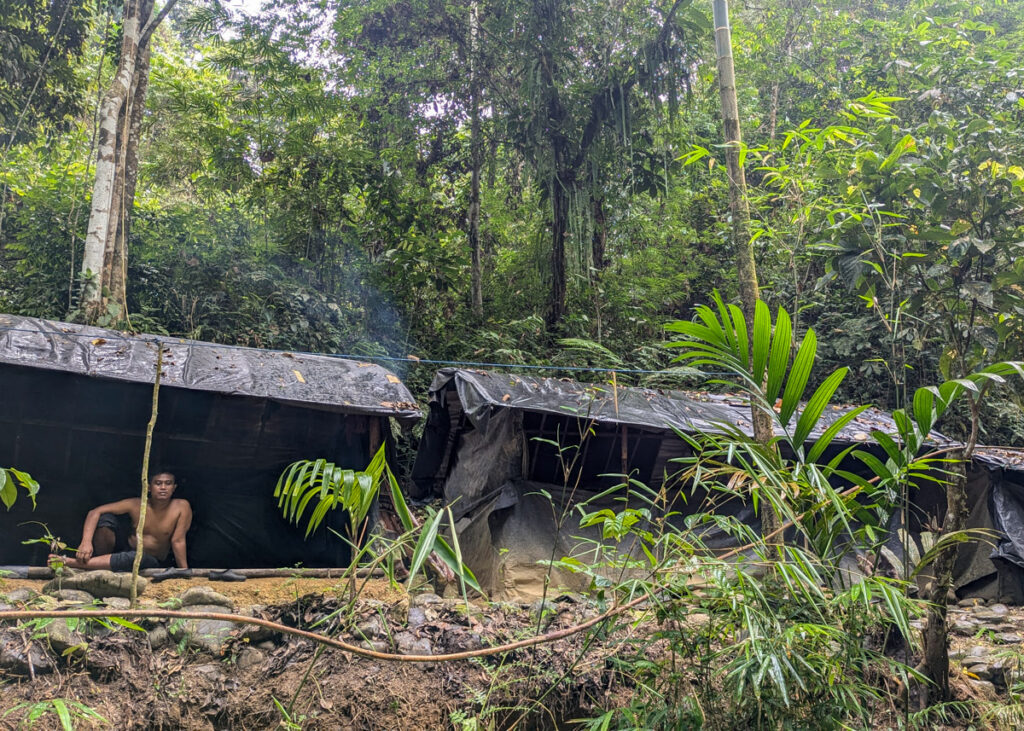
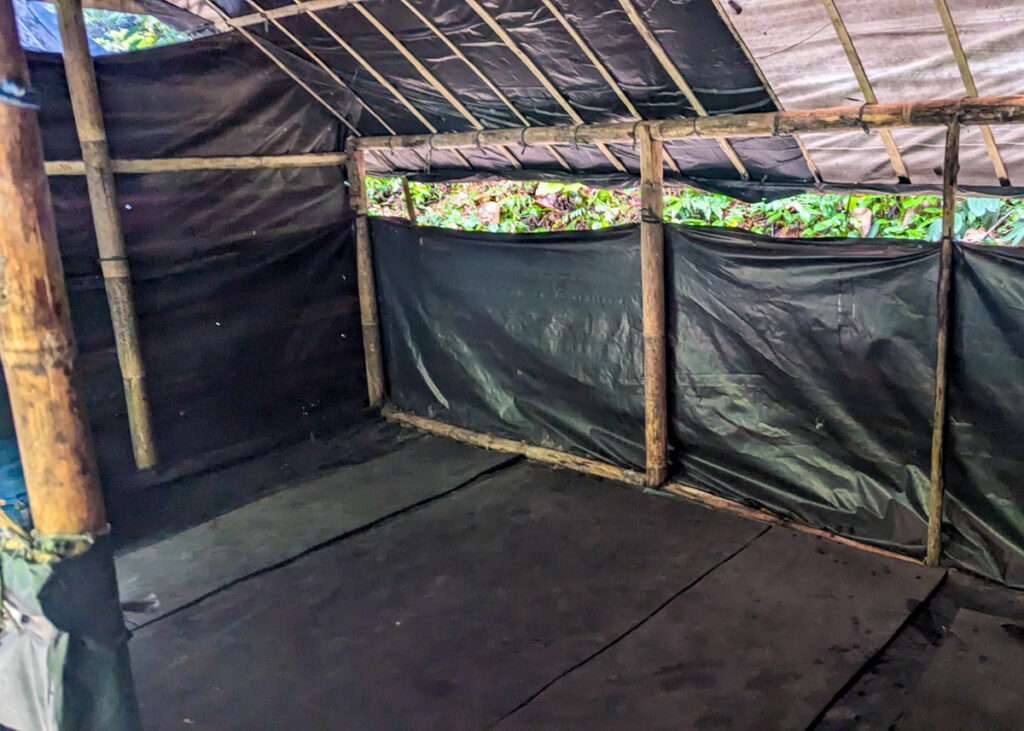
The tarpaulin covers you from above and some of the sides, but there are tiny gaps underneath that wildlife could use to get in, so it’s not completely enclosed by any means. This meant that leeches found there way into the hut and we were sucked on a few times during the course of the evening. Mosquitoes weren’t an issue though.
We had been forewarned that the floor was hard, only covered in thin mats, and this proved to be the case. It was very hard underneath and sleeping was compromised as a result. We did buy one single inflatable camping mattress from home that made all the difference to the one person who used it. They are fairly expensive though and add weight to your backpack but we’d suggest buying one for anyone who is likely to need it. For the rest of us, it was a difficult night’s sleep and we woke up about a dozen times.
But, it’s an incredible experience and it felt like quite an achievement and one we were so happy we persevered with. When morning arrived, we’d be lying if we said it wasn’t a relief, but there was something magical about waking up in this environment, stiff backs and limbs notwithstanding.
Toilets are extremely basic, amounting to a mound of leaves for number ones, and a patch of sand for anything else. You need to take a stick, dig a hole and hope for the best. Some campers might decide to take an Imodium and not take their chances.
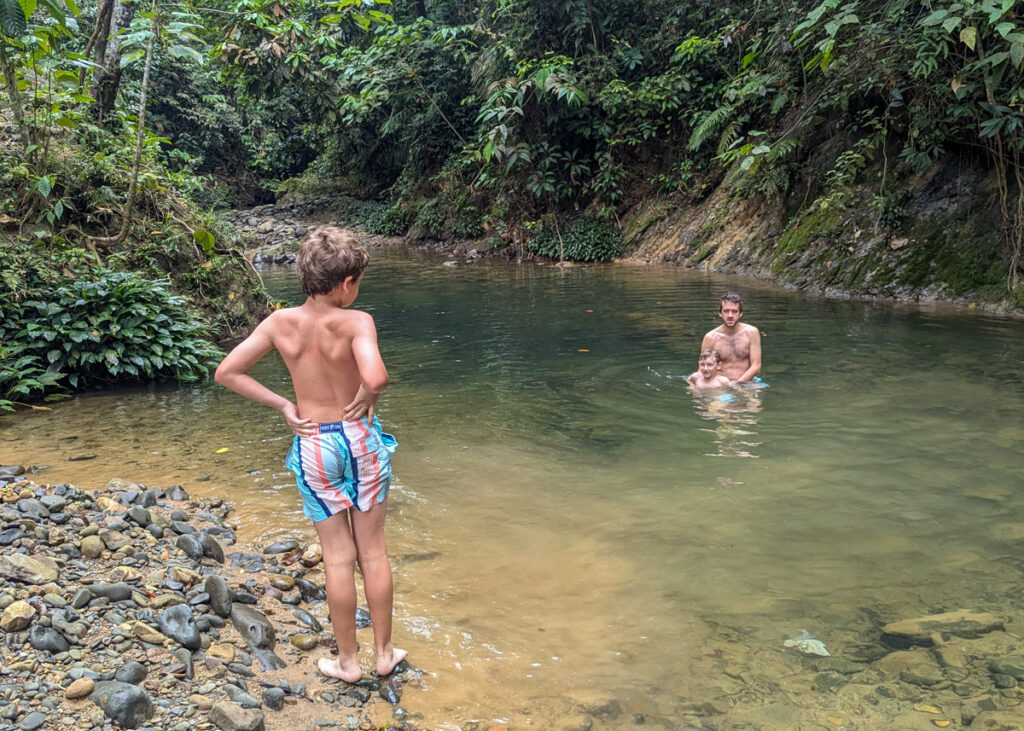
What about animals (both welcome and unwelcome)?
On the first day, you probably won’t see much wildlife as this is ‘proper’ rainforest where humans are rare and animals know to keep their distance. We saw a lantern bug, plenty of macaques and that was basically it, but still a great experience. There’s always a chance you’ll have more luck and see orangutans, but don’t count on it.
On the second day, you will see lots more wildlife (and humans).
Leeches are everywhere on the trek, not ideal and they did manage to find their way onto our skin a few times. You soon learn to pinch and remove but it never gets any less gross. The tobacco water seemed to help on our socks, just remember to keep them tucked into your trousers.
Mosquitoes were a lot less of an issue than we expected and didn’t seem to be present around the camp area. It’s still a good idea to use DEET repellent, cream is better than spray in this environment.
Finally, there was no sign of any snakes (thank God), although they are of course always somewhere close by. Just avoid wandering around the long grass or putting your hands down any holes and you should be fine.
Will the kids enjoy it?
Yes, this is a great trek for kids, although they should be relatively experienced hikers, ideally with a few multi-day treks under their belts in easier conditions. It’s difficult to specify an minimum age as it’s so dependent on each child, but eight upwards is a good guide.
The leeches are a nuisance for everyone and squeamish kids might find them more of a problem. In the evenings, the bamboo huts are largely enclosed but there are obvious gaps in the walls. If your kids either have an overactive imagination or a particular phobia of creepy crawlies, it might be difficult to convince them a stress-free night is ahead.
On the plus side, the guides are brilliant with kids and go out of their way to encourage them. And of course, the tubing at the end is a fantastic way to reach Bukit Lawang.

Food and drink
Food is excellent on the trek. The guides and cook really look after you and go the extra mile in preparing the food, for example taking care to lay out the fruit platter and asking you about any dietary requirements. Considering they have to carry all of the produce with them on the trek, the meals are tasty and nutritious, usually centring around fried rice and vegetables.
The evening meal at the camp was incredible, considering where we were and how limited the kitchen facilities were. Consisting of rice, banana plant curry, tempe, vegetables and fruit, there was too much for us to eat and we left feeling filled and replenished.
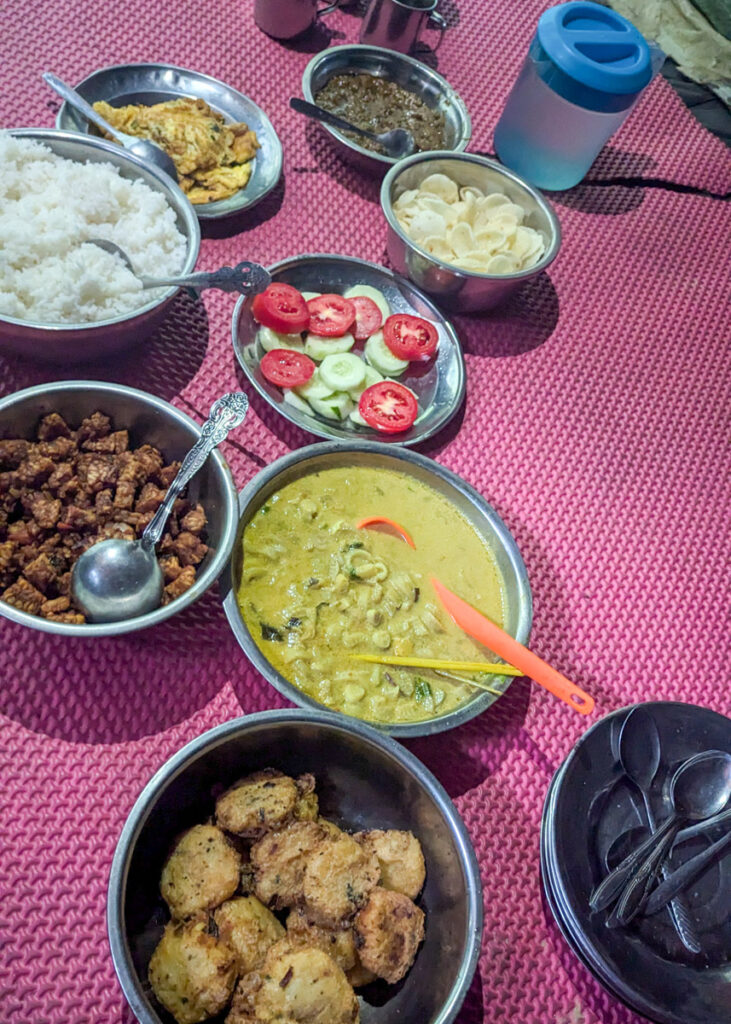

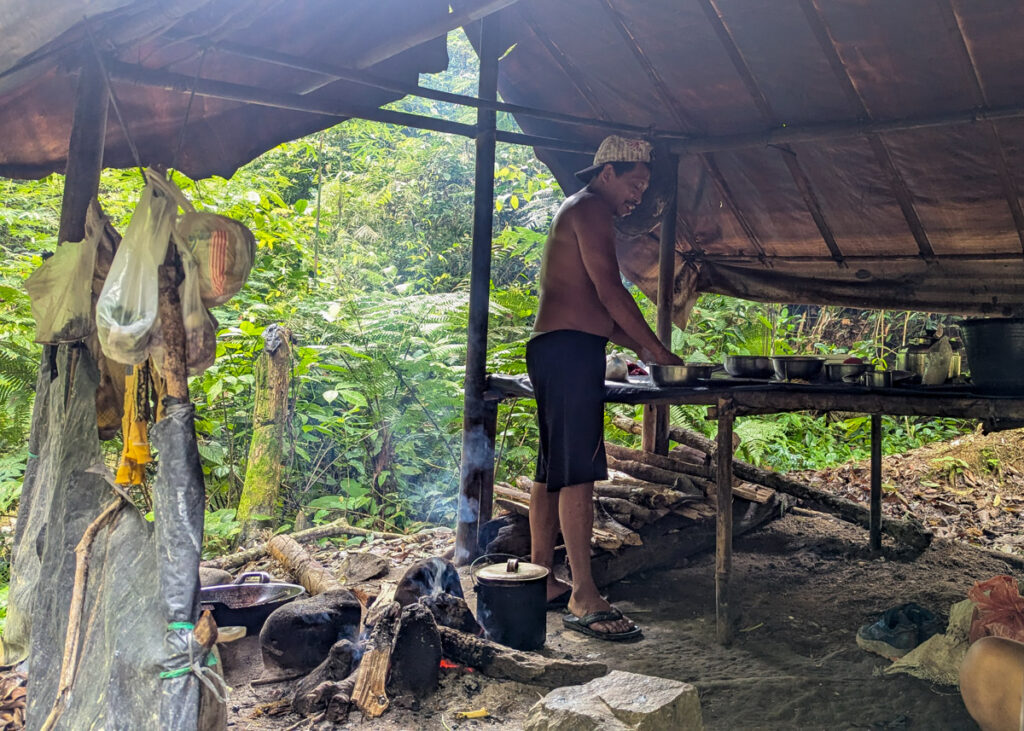
You must take a large (1.5L plus) reusable bottle with you on the trek and make sure you fill up at Green Hill before you leave. Once you arrive at the evening camp, you’ll be provided with boiled river water that is still warm; you just need to put your bottle into the river and let it cool for twenty minutes or so. By morning, the rest of the water will have cooled down as well, allowing you to top up for the return journey. However, you’ll be back in Bukit Lawang within an hour or so, and you can buy bottled water from there.
Tips for your hike
- Take it steady, there is no rush and you have plenty of time to complete the distance in the allotted time.
- Be prepared that it’s quite a challenging trek in the heat and humidity, with very little in the way of flat sections, especially on day one.
- Everyone will benefit from a walking pole. Ideally bring one with you from home, otherwise your guides are adept at manufacturing one from fallen branches once you’re on the trail.
- Don’t expect to see huge amounts of wildlife. The beauty of the trek is the immersion in the pristine rainforest, not constant wildlife sightings.
- Prepare yourself for leeches, they are a constant presence even if they rarely make it onto your skin.
- Younger kids should be used to hiking for several hours at a time. This isn’t the trek for first-timers, nor for kids who aren’t used to longer distances.
- You won’t need much entertainment for the night at camp as you’ll all be tired and it’ll be dark within a few hours of arriving. Perhaps pack Uno or similar if you fancy a break.
- Headtorches are useful to use as hanging lamps in the bamboo huts once the sun goes down.

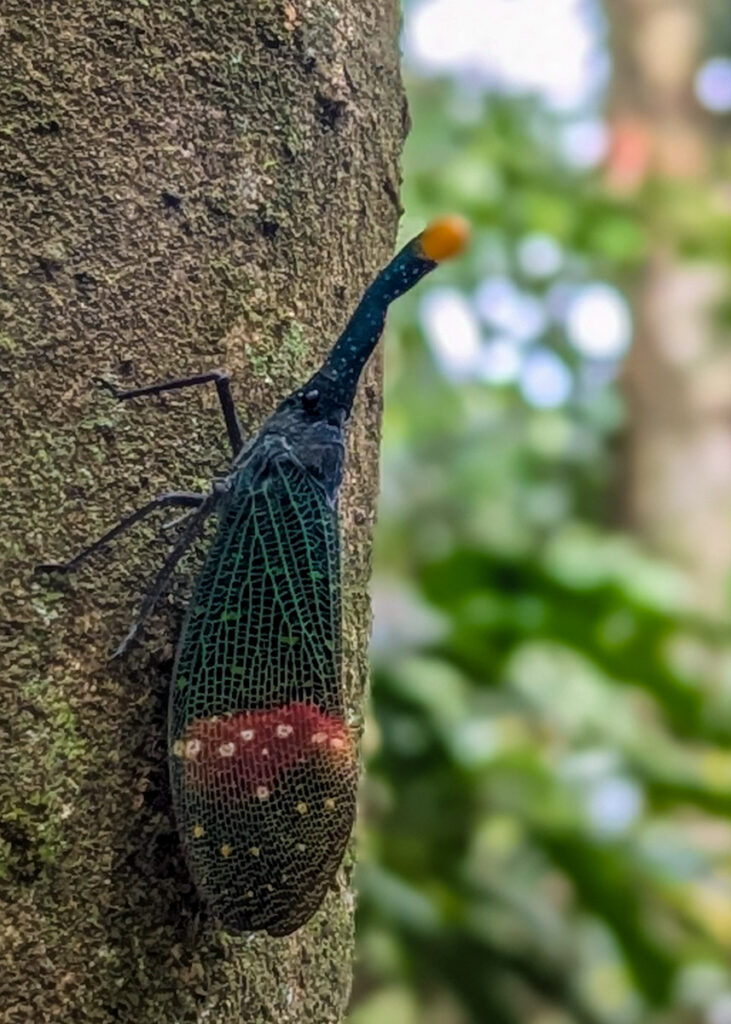
Things to do after your jungle trek
In the short term, you’ll be ready to relax in Bukit Lawang after your trek, perhaps with a visit to Wild River for dinner and a beer. If you’re still in the mood for a walk, it’s a simple two-hour round trip to visit the Bat Cave on either the day before or after your trek.
After leaving Bukit Lawang, your likely next destination is Medan, Berastagi (for an epic volcano hike) or Lake Toba, all of which can be reached via private transport.
Final thoughts on this Bukit Lewang Jungle Trek
This two day rainforest trek definitely belongs in the ‘tough but memorable’ category, and you’ll be so glad that your family completed it. It’s not packed full of wildlife sightings but part of the appeal lies in getting off the beaten track and disappearing into a part of Sumatra that few other tourists get to experience.
The team at Green Hill are the experts in arranging the whole experience so you’re in safe hands, leaving you free to tuck your socks in, lace up your shoes and head off into the wilderness.
You may also like to read:
Sumatra with kids travel guide (2025): including a one week itinerary
Hiking Mount Sibayak: climb to a volcanic crater in Berastagi
Visiting Borneo with kids

